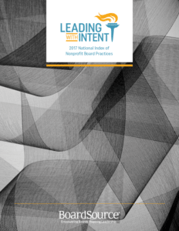 I worked on my family’s dairy farm through high school and college, but the twice-a-day milking routine never came easy for me. Summers were stifling hot; winter mornings at 3 a.m. were often below freezing.
I worked on my family’s dairy farm through high school and college, but the twice-a-day milking routine never came easy for me. Summers were stifling hot; winter mornings at 3 a.m. were often below freezing.
While milking, the workers stood in a pit that placed the cows at chest level. It felt like daily combat — combat where the cows definitely had the advantage. My arms and hands were targets for quick kicks. My face was the object of nonstop tail swats.
But for some reason, the longtime veterans of the dairy didn’t seem to have the difficulties I did in getting the cows’ cooperation. I never understood why that could be, until one particularly frustrating morning, I was given some advice: “Hardy, you have to learn to think like the cows if you want their cooperation.”
At the time, I laughed at what the worker said, but I later realized how profound it actually was. It gave me valuable — and transferable — insight into bovine thinking that helped me improve at my job.
Nonprofit leaders seeking to improve relationships with their board members can benefit from my co-worker’s dairy-barn wisdom. Because while he may have been talking about the cows, it applies to fostering relationships among board members as well.
Enable Success by Improving Connection
We often make the mistake of assuming we know what others want. I thought that all the cows needed was to be fed and milked, but it turned out there was more to them than that.
We can get so focused on the work to be done, we don’t take the time to better understand those we are working with. And it’s difficult to put yourself in someone else’s shoes if you don’t know them. As a result, collaboration and support can suffer.
 According to BoardSource’s Leading with Intent: 2017 National Index of Nonprofit Board Practices, it’s essential that nonprofit board leaders are able to build a positive culture, reach consensus, and compromise. These things happen more easily when boards have the ability to work collaboratively.
According to BoardSource’s Leading with Intent: 2017 National Index of Nonprofit Board Practices, it’s essential that nonprofit board leaders are able to build a positive culture, reach consensus, and compromise. These things happen more easily when boards have the ability to work collaboratively.
Positive relationships are the cornerstones of successful and productive interaction between CEOs, board chairs, and board members. However, it’s difficult to have productive and positive relationships when you don’t know people. To get beyond casual-acquaintance status, you must truly know them.
When this doesn’t happen, the stage is set not only for misperception but even for inaccurate labeling. Board members who always ask challenging questions may be tagged as difficult and disruptive. But are they really? Without an understanding of their background and how they think, there’s no way to know why they are asking those questions.
The book Make Difficult People Disappear by my colleague Monica Wofford, points out there is quite a difference between the truly difficult and the merely different.
People are sometimes misbranded as difficult just for not fitting the same cookie-cutter personality as other board members. Which is why it’s important to know the difference between the two.
A truly difficult board member disrupts meetings, bullies others, and attempts to dominate an organization. This individual’s negative behavior affects participation by others and causes harm to a group’s good work.
On the other hand, a board member who is merely different may appear difficult because he keeps you from blowing through your agenda, but is that really a bad thing? No. In fact, a board member willing to ask thought-provoking questions that others won’t ask is helping the board stay in line with good governance responsibilities.
Oftentimes though, the only way to know the difference between different and difficult is to know the person’s motivations. And knowing that individual better will reveal whether or not those inquiries are motivated by a desire to be helpful. The knowledge that their comments are coming from a place of sincerity will have a positive effect on how others around the board table interact.
Facilitate Results by Matching Goals and Personalities
Effort to gain this insight should begin in the board-prospect recruiting process. That’s the right time for get-to-know-you conversations. This is far better than mistakenly assuming prospective members will take on whatever duties are assigned. And understanding personality characteristics provides clues on members’ likely response to your expectations.
For example, Type-A-Commander personas common among business CEOs aren’t typically associated with executing tasks. Why? Because they’re in the practice of delegating. Wouldn’t knowing that in advance help prevent potential frustration with board members who’ve been given mismatched assignments?
If you want task-oriented board members, recruit individuals with personalities aligned with that trait. With current members, pair assignment requests that are compatible with their individual characteristics. Successfully navigating each of these situations is a benefit of knowing who you’re dealing with.
Other ways to help with this are to create social opportunities for interaction outside formal meeting settings, or even consider conducting a personality assessment exercise — a great tool providing everyone in-depth recognition of whom they’re serving with.
And as simple as it sounds, one strategy for knowing someone is to ask questions — and then listen.
In his book, A Leader’s Gift, Barry Banther, shares four questions for use during a conversation that will get people to provide deeper insights into their thoughts. The four questions are
- How do you mean that?
- Can you give me an example?
- Why is this important?
- How will this affect us?
Barry’s questions have a two-way benefit. The person asking questions is getting information that will be useful for relationship building. But the person responding also feels that their opinions and contributions are being acknowledged. Demonstrating a willingness to invest time to genuinely know someone makes both parties feel appreciated and valued. That in turn creates connection which increases engagement commitment.
Barry also offers these valuable words of advice for using conversation to know someone better.
“Focus on the individual by putting aside any other activities. Don’t allow any distractions to giving undivided attention. And avoid judgment — don’t predetermine or assume what someone is attempting to communicate.”
Another strategy for getting to know your board members better is incorporating icebreakers. Mission-moment sharing is one of my favorites when facilitating board retreats. Powerful personal insights can be revealed when board members open up to what board service means to them and what they would like to achieve.
Creating a board environment where everyone is committed to knowing one another is a foundation for the board championed by Leading with Intent. And a board with a positive culture that provides dynamic leadership guidance through collaboration, consensus, and comprise will meet engagement expectations.
Knowing your board members matters. What actions can you take to ensure that it happens?

